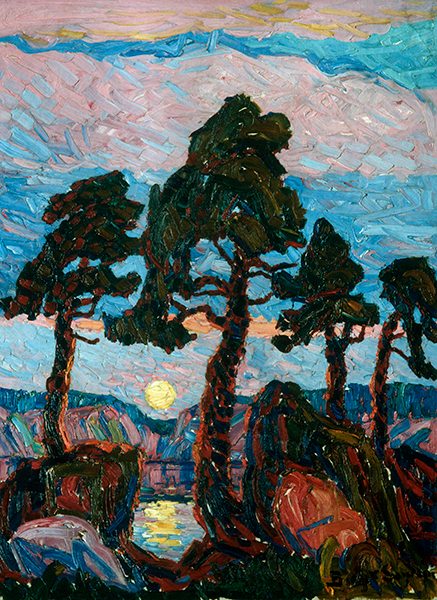The Van Gogh of America: Birger Sandzén
As we celebrate the 4th of July and what it is supposed to represent, I present to you an artist who was an immigrant and had a big impact on American art and art education: Birger Sandzén. He not only introduced a unique personal style to American painting, but he also developed an abiding love for the magnificent landscape of the American West.
 |
| Birger Sandzén (1871–1954, U.S., born Sweden), Landscape with Four Trees, ca. 1920. Oil on canvas, 47 ¾" x 35 11/16" (121.3 x 90.6 cm). Courtesy of the Spencer Museum of Art, University of Kansas, Lawrence. © 2021 Artist or Estate of Artist. (SMA-42) |
Originally from Sweden, Sandzén moved to Kansas to teach painting in 1894. The period from that time until the 1920s is probably most representative of his personal adaptation of Impressionism. Many of his landscapes, such as this one, are interpretations. He felt that landscape was particularly appropriate for the exploration of color because the outdoor light could produce a myriad of hues, even in one sitting en plein air (out of doors). He totally ascribed to the Pointillist point of view that pure colors should be applied that refracted one another, which, from a distance, optically blended to form the subject.
Swedish painting from the 1600s until the late 1800s was dominated by French and British influence. While the academic bent caused Swedish painting to diminish in stature compared to other schools in Europe, Swedish indigenous painting flourished. During the 1890s, Sweden again had an artist of international stature: Anders Zorn (1860–1920). Zorn had studied in Britain and Spain, but more importantly in Paris during the late 1880s to mid-1890s. Like many academically trained Scandinavian painters, he had a strong interest in the accurate depiction of light. His contact with Impressionism made his lighting more ambient within a painterly realist style.
Sandzén, born in Blidsberg, Sweden, initially took drawing lessons at home. At school in his teens, he began to enthusiastically develop a career in painting. He went to Stockholm in 1891, ostensibly to train at the Royal Academy. Because there were no vacancies, he studied under Zorn.
Going to Paris in 1894, Sandzén painted in the Impressionist and Post-Impressionist circles with the Pointillist painters Edmond Aman-Jean (1860–1935) and Georges Seurat (1859–1891). The Pointillist approach to painting, where short brush strokes of pure color are laid next to one another, profoundly impacted his mature painting style.
See more of Sandzén’s oil paintings on the Birger Sandzén Memorial Gallery website: sandzen.org/oil-paintings.
Correlations to Davis Programs: A Community Connection 2E: 5.5

Comments